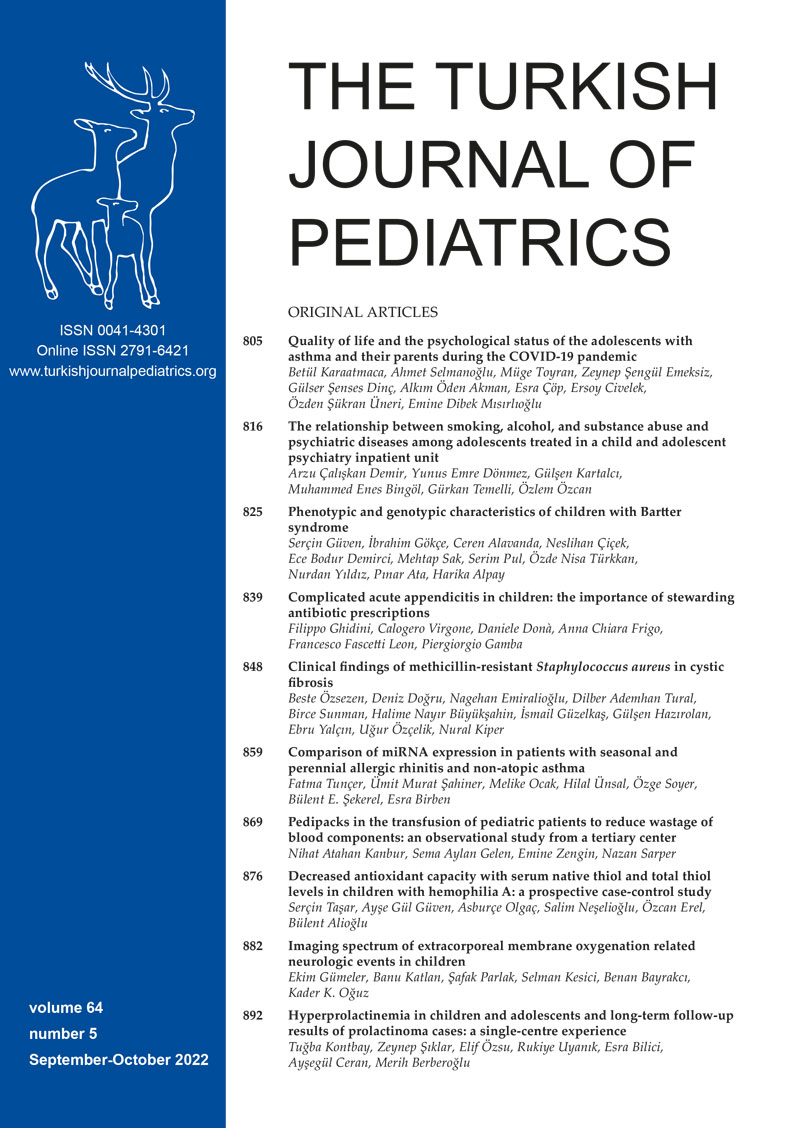Abstract
Background. Extracorporeal membrane oxygenation (ECMO) can be associated with severe neurological complications increasing morbidity and mortality. We aimed to evaluate imaging findings in patients with neurological complications associated with ECMO.
Methods. Children ( < 18 years) who had ECMO support and received cross-sectional imaging (cranial CT and/ or MRI) were retrospectively evaluated. Age, gender, clinical and imaging findings were documented and the relation to ECMO duration and survival rates with imaging findings and imaging time (during ECMO or after weaning) were examined.
Results. Twenty children who had cranial CT/MRI during (n=6) ECMO and after weaning (n=14) were included in the study. The median duration of ECMO was 12.5 days (IQR=5-25 days) with a survival rate of 65%. Fourteen patients had positive imaging findings including ischemic stroke (n=4), hemorrhagic stroke (n=4), hypoxicischemic encephalopathy (n=2), posterior reversible encephalopathy syndrome (PRES) (n=3) and cerebral vein thrombosis (n=1). The duration of ECMO and survival rates did not significantly differ between patients with positive and unremarkable imaging findings. However, the survival rate was significantly higher (p < 0.001) and the duration of ECMO was significantly lower in patients scanned after weaning compared to patients imaged during ECMO support (p=0.033).
Conclusions. Our series revealed PRES in ECMO-related neurologic events in addition to commonly reported thrombotic and hemorrhagic stroke in the literature. Availability of cross-sectional imaging and awareness of radiologists to these complications during ECMO or after weaning help in prompt diagnosis and treatment.
Keywords: extracorporeal membrane oxygenation (ECMO), imaging, neurologic complications
Copyright and license
Copyright © 2022 The Author(s). This is an open access article distributed under the Creative Commons Attribution License (CC BY), which permits unrestricted use, distribution, and reproduction in any medium or format, provided the original work is properly cited.














